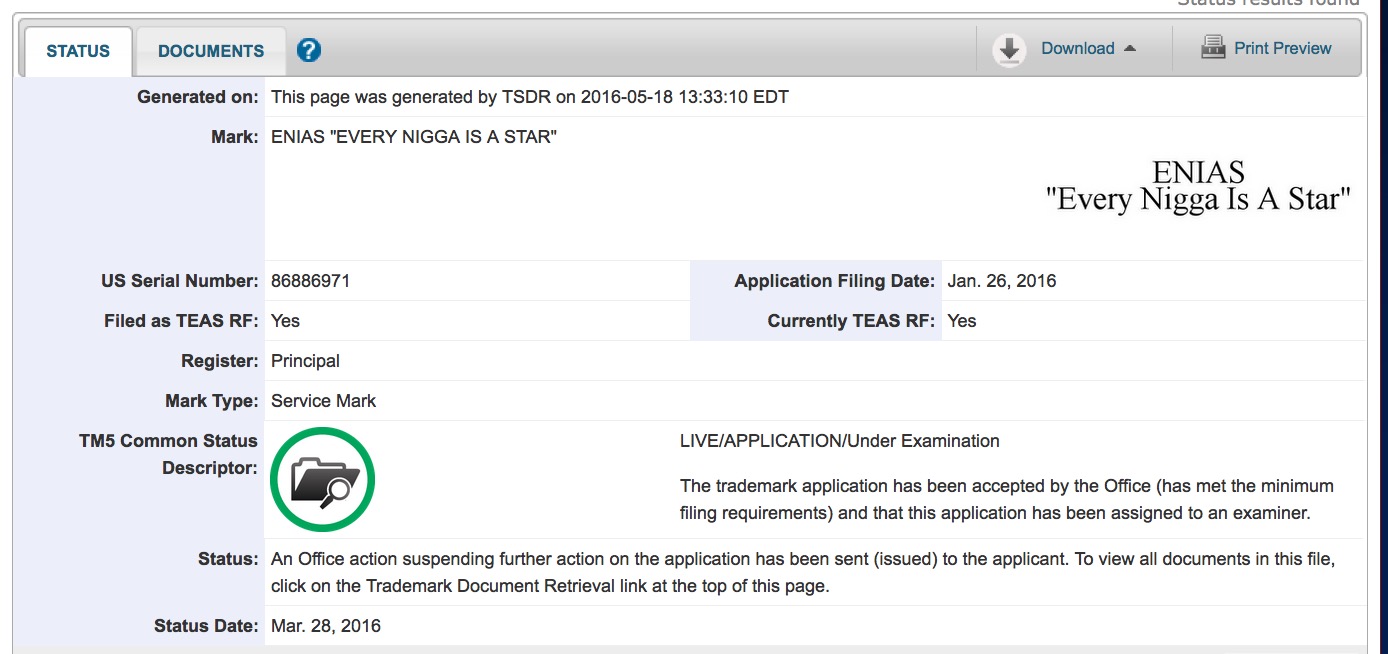A few months ago, I wrote about the trademark case involving a band known as The Slants. It’s relevant to point out that the band is made up of Asian-Americans. The band tried to register their name as a trademark before the United States Patent and Trademark Office. The USPTO refused on the grounds that Section 2(a) of the Lanham Act bars them “from registering scandalous, immoral, or disparaging marks.” In late 2015, the Court of Appeals for the Federal Circuit ruled, on First Amendment grounds, that Congress (who created the Lanham Act) cannot impose this kind of speech restriction.
On April 20, 2016, the USPTO appealed the case to the U.S. Supreme Court by filing what’s called a “writ of certiorari.” We’re all waiting to see if the Supreme Court takes up the case. In the meantime, the “scandalous, immoral, or disparaging” ban is up in the air.
Which leads us to this application, which was filed on January 26, 2016:

The applicant is one Allison Y. Hugh of Florida. She applied to register the mark in class 040 in connection with “Custom imprinting of mobile device accessories with decorative designs; Custom imprinting of t-shirts, jackets, caps, hats, jeans, shoes, scarves, shirts, pants, belts, coats with messages.”
Because the application was filed on an Intent-to-Use basis, there are no images of how the mark will actually be used.
The USPTO’s response began by stating:
The following two-part test applies when determining whether a proposed mark may be disparaging:
(1) What is the likely meaning of the matter in question, taking into account not only dictionary definitions, but also the relationship of the matter to the other elements in the mark, the nature of the goods and/or services, and the manner in which the mark is used in the marketplace in connection with the goods and/or services; and
(2) If that meaning is found to refer to identifiable persons, institutions, beliefs, or national symbols, whether that meaning may be disparaging to a substantial composite of the referenced group.
The response then noted that the word in question “is scandalous because it is an extremely offensive and derogatory reference to an African American person.”
Prior to The Slants case, the ENIAS application would have been rejected. However, on March 28, 2016, the USPTO suspended Hugh’s application:
Because the constitutionality of the disparagement provision of Section 2(a) remains in question, action on this application is SUSPENDED until the later of the following occurs: (1) the period to petition for a writ of certiorari (including any extensions) in Tam expires without a petition being filed; (2) a petition for certiorari is denied; or (3) certiorari is granted and the U.S. Supreme Court issues a decision (that would likely issue by the end of June 2017).
Note that the writ of certiorari was filed subsequent to this suspension, so #1 is now moot. The ENIAS application will remain suspended until either #2 or #3 occurs, meaning, either the Supreme Court declines to take up the Slants case or they do take up the case and issue a decision.
Presumably, if the Supreme Court declines to take up the case, the Slants decision will stand, and this application will proceed…but that’s not 100% clear. So we’ll have to see how the USPTO handles these matters should that come to pass.

